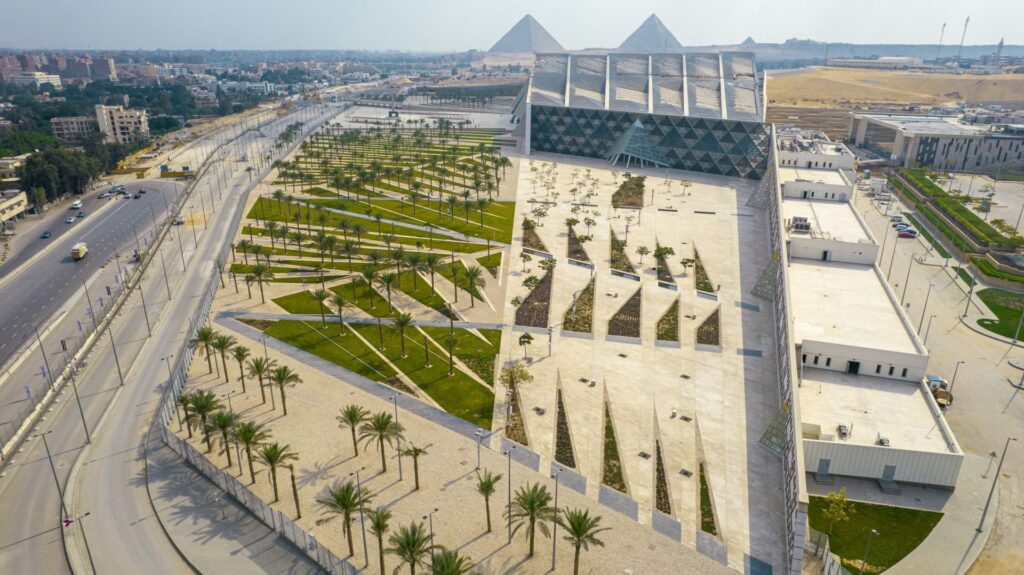
The Grand Egyptian Museum is a world-class complex of buildings and landscape with one identity, demonstrating the progress, evolution and development of the Egyptian Civilization. Designed by Irish firm Heneghan Peng Architects, the project was initiated in 2003. The site for the Grand Egyptian Museum is located at the edge of the first desert plateau, two kilometres from the Pyramids of Giza. It is defined by a 50-metre level difference, created as the Nile carves its way through the desert to the Mediterranean, a geological condition that has shaped Egypt for over 3,000 years.


Seamlessly woven together, the museum and landscape emerge from a strict design grid. Stretching outwards like a fan, the five walls of the museum are positioned to visually align the entrance of the site with the three points of the distant, iconic pyramids of Giza. Running through the complex is a second, meandering path that represents the Nile’s journey through the Egyptian desert. This concept influences the design at all scales – from site plans to exhibition showcases. Following the competition for the new Grand Egyptian Museum, West 8 along with the winning architectural team, Heneghan Peng Architects refined the concept of the museum, prepared a design for the garden spaces and developed a master plan for the museum environment in relation to the pyramids of Giza. The landscape design draws inspiration from the River Nile, the wealth derived from its flood plains, and how nature was integral to ancient Egyptian agriculture and civilisation. The three main spaces include the Nile Park, Entrance Plaza and Palm Grove.




The approach to the museum is a series of layers, whereby the visitor moves through a monumental forecourt, a shaded entrance area and a grand staircase that ascends to plateau level, the level at which the galleries are located where for the first time the visitor sees the pyramids from within the museum. The museum is envisaged as a cultural complex of activities devoted to Egyptology and will contain 24,000 sqm of permanent exhibition space, almost 4 football fields in size, a children’s museum, conference and education facilities, a large conservation centre and extensive gardens on the 50 hectares site. The collections of the museum include the Tutankhamun collection, which is currently housed in the Egyptian Museum in Cairo, and the Solar Boat which is now housed beside the pyramids.
Featuring 12 exhibition halls, the museum houses over 100,000 artefacts, dedicated to years of research and egyptology. The museum’s soaring atrium is marked by a 36-foot-tall, 3,200-year-old statue of the Egyptian Pharaoh Rameses II. A grand staircase ascends to plateau level from where, through the galleries, the eye is drawn outside, towards the ancient wonders. Seamlessly integrated into the museum’s master plan, a series of gardens create a favourable micro-climate.



Project Details:
Name: The Grand Egyptian Museum
Location: Giza, Egypt
Status: Ongoing
Area: 100,000 sqm
Typology: Cultural Architecture – Museum
Design Firm: Heneghan Peng Architects
Photographs: ©Heneghan Peng Architects, ©Grand Egyptian Museum






